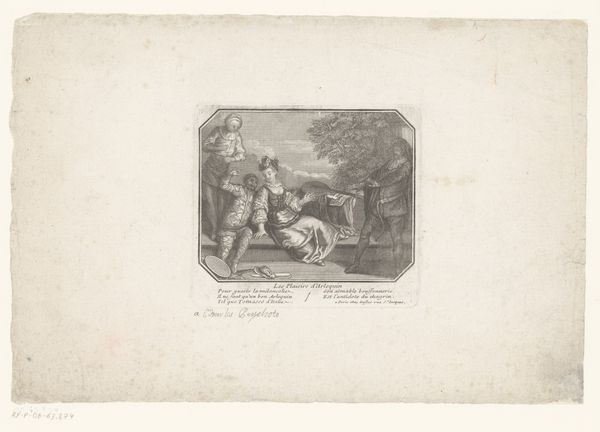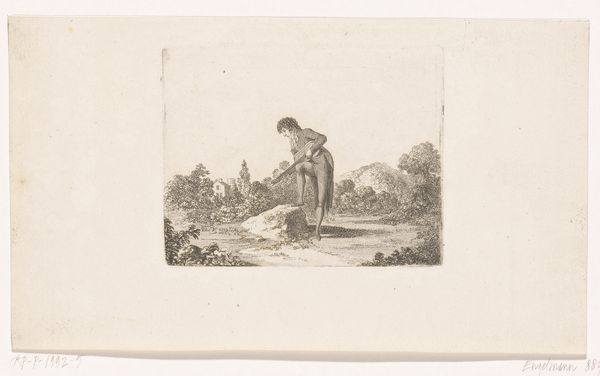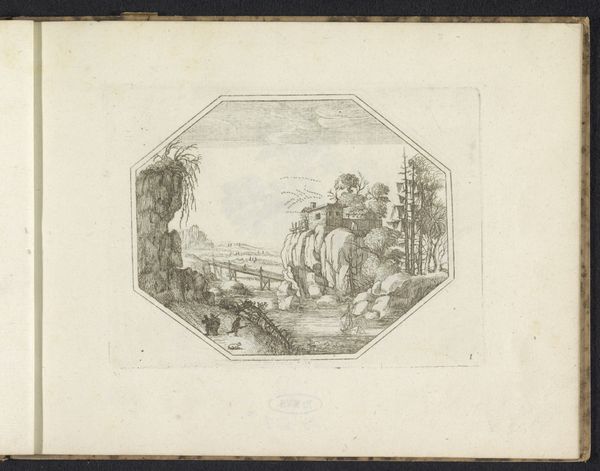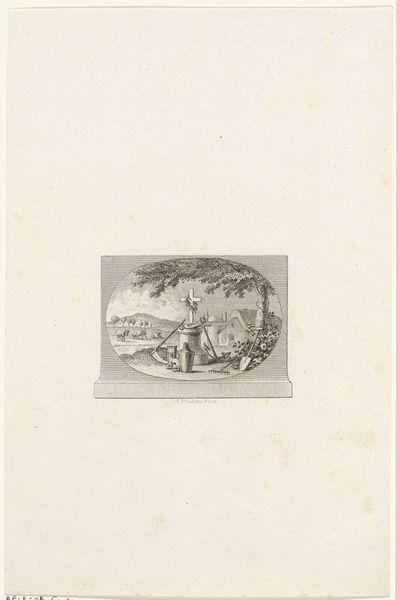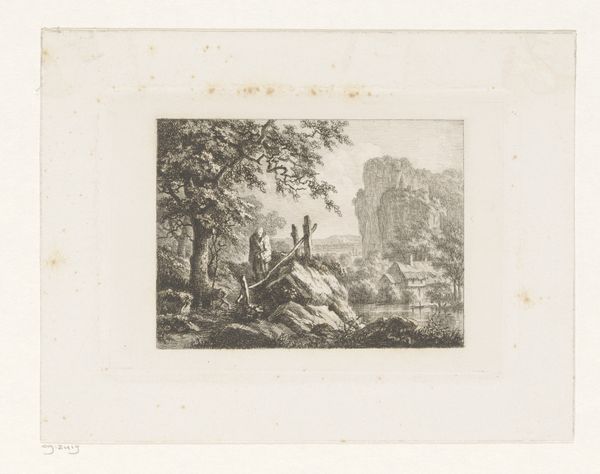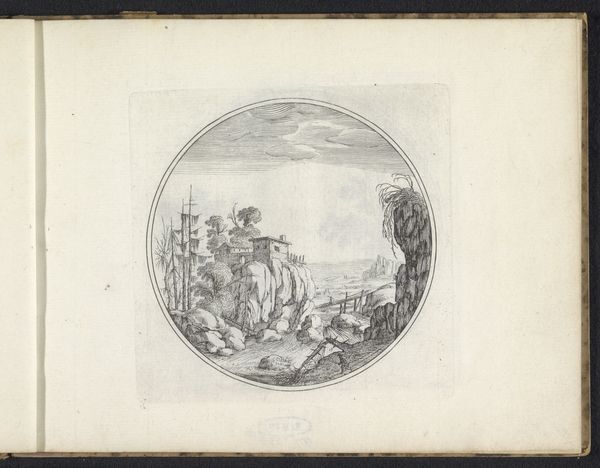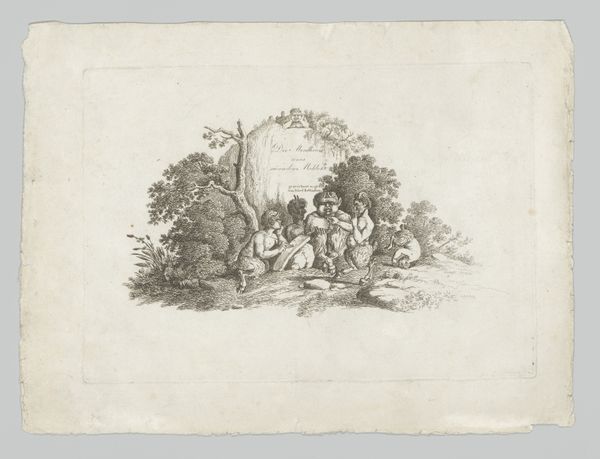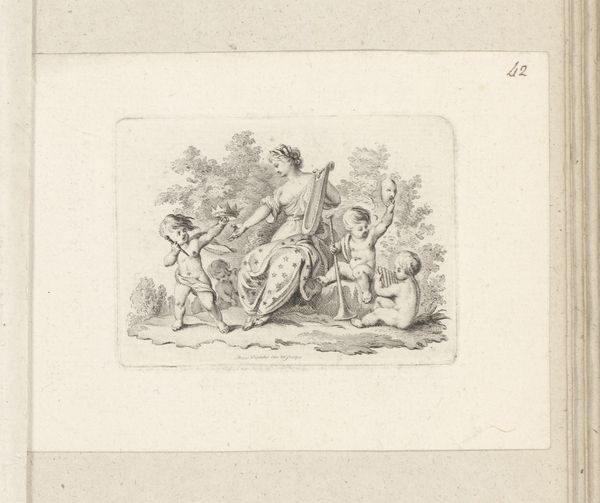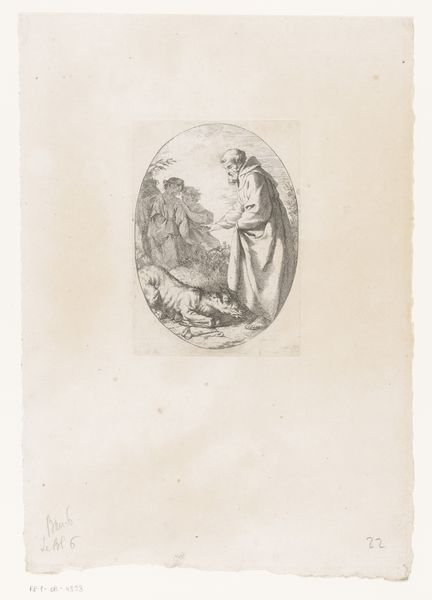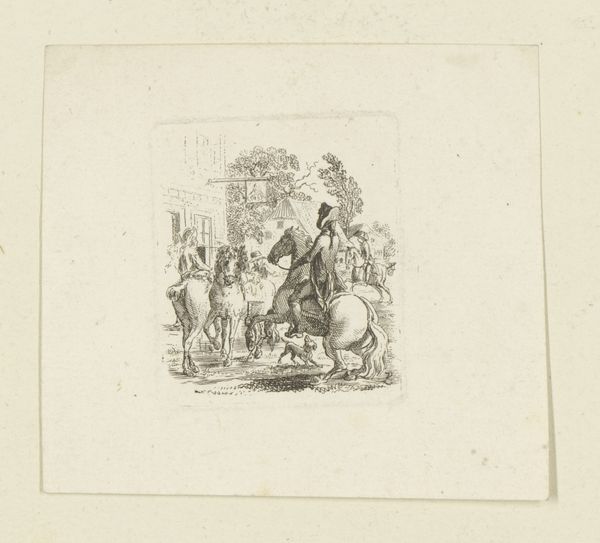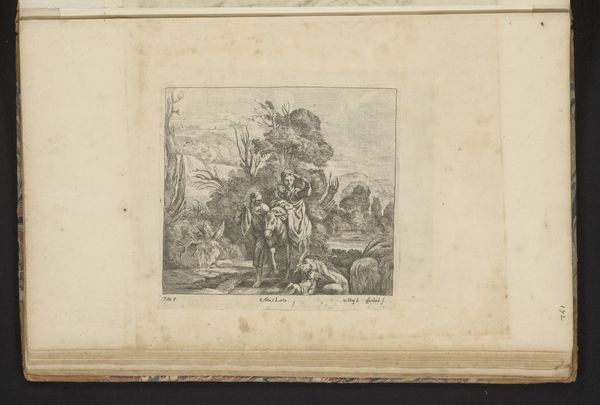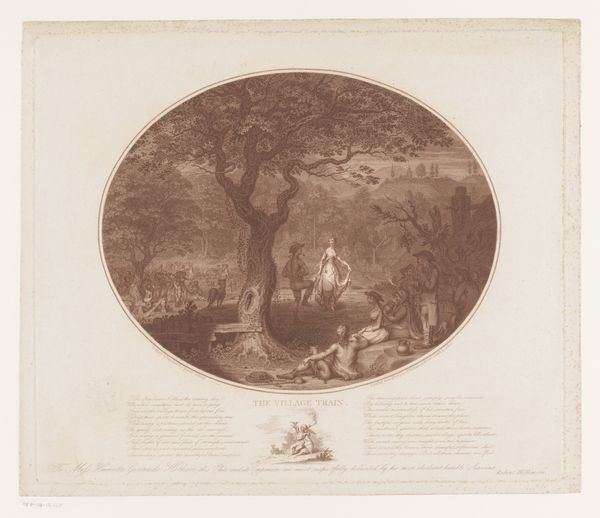
Vignet med en ældre mand, der sidder i selskab med yngre, hvem han viser landskabet bag dem 1802
0:00
0:00
drawing, print, etching
#
pencil drawn
#
drawing
#
ink paper printed
# print
#
etching
#
old engraving style
#
landscape
#
pencil drawing
#
romanticism
#
line
#
genre-painting
#
history-painting
#
academic-art
Dimensions: 49 mm (None) x 74 mm (None) (billedmaal), 60 mm (height) x 85 mm (width) (Plademål)
Curator: Here we have Andreas Flint’s etching, made in 1802, titled "Vignet med en ældre mand, der sidder i selskab med yngre, hvem han viser landskabet bag dem." Or, roughly translated, "Vignette with an old man sitting with a younger man, whom he shows the landscape behind them." Editor: My first thought is of narrative. There is a strong emphasis on line, which seems typical of the era, but creates a detailed intimacy here. It really draws me into that imagined conversation between the figures. Curator: Precisely. Consider how prints like this circulated at the turn of the 19th century. This image embodies Romantic ideals, contrasting the older generation’s wisdom with the youthful gaze directed toward the landscape—a future they'll inherit. This piece is more than ink on paper; it speaks to intergenerational dialogue, rife with societal expectations and burgeoning possibilities. Editor: Indeed. And to think about it materially, the etching process itself, biting into metal with acid, allows for these fine lines. It creates a level of detail impossible with woodcuts, and the very process suggests permanence—the kind of lasting conversation implied between the figures. There’s the potential for mass production, the artwork available for many. What message did it convey on a larger scale at the time? Curator: A loaded one. We're post-French Revolution but pre-Napoleonic Wars here; generational shifts were tied to social upheaval and questioning of inherited authority. The very act of the elder directing the younger’s gaze signifies a shifting power dynamic, doesn't it? Romanticism placed a renewed focus on the individual's connection to the natural world, inviting exploration of these anxieties and shifting values. Editor: So, a miniature tableau printed on relatively inexpensive paper, spreading ideas among the increasingly literate, critiquing or maybe celebrating these transitions. How many people could hold that image in their hands and be moved by its implications? The materials speak to access, scale and a changing societal framework. Curator: It is amazing to imagine. I find it continues to invite questioning around inherited power structures and societal values, even centuries later. Editor: Absolutely, a testament to how a material analysis enriches our interpretation of the artwork's message.
Comments
No comments
Be the first to comment and join the conversation on the ultimate creative platform.
